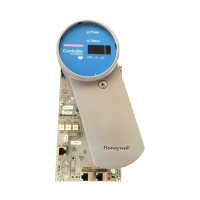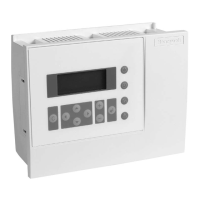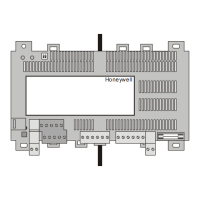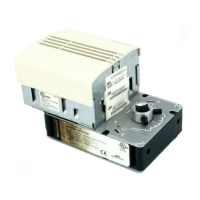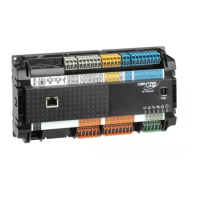C300 Controller start up
Loading IOMs and CMs
R301.1 Experion C300 Controller User's Guide 159
11/06 Honeywell
Stage Description
that there are no address errors.
Address errors - The controller determines if any other module in the FTE
network is using the same Device Index. If another module is discovered
with the same Device Index, the controller will not join the FTE network but
instead will enter the “no address” state and wait for new Device Index to be
set.
If another node is discovered with the same IP Address, the controller will not
join the FTE network but instead will enter the “dup address” state.
Action: If the Device Index is invalid, or any address error is displayed, see
Reset Device Index and IP address of a controller
and follow the procedure to
reassign the Device Index and IP addresses.
Once a valid IP Address is assigned, the controller negotiates its redundancy
role (primary/secondary) with its partner module, if redundant. See Stage 9.
9
The controller alternately displays its Device Index, redundancy role and
execution state on the controller’s faceplate display.
Redundancy role - Question marks ‘????’ may appear on the display to
indicate that the controller’s redundancy role has not been determined. For
non-redundant controllers, the redundancy role is shown as ‘nrdn.’
Execution state - If no EE databases have been retained in a primary or non-
redundant controller, the controller enters the No Database ‘NODB’ execution
state. If the controller’s database has been retained, the execution state is
‘IDLE.’
Secondary controller first displays ‘????’ until its redundancy role is
determined. Once determined the secondary controller indicates it is an
unsynchronized secondary or synchronized secondary. The secondary
controller also shows the controller’s execution state, which is ‘BKUP.’
Figure 6 illustrates the C300 Controller startup routine and the possible controller states
when the controller is in the Boot mode.
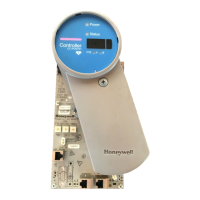
